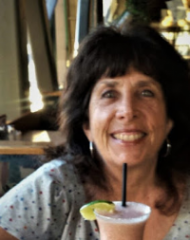By Angelica Shirley Carpenter |

On November 5, 1872, Susan B. Anthony voted in the presidential election in her hometown of Rochester, New York. Two weeks later a United States deputy marshal called at her house to arrest her for illegal voting. He offered to let her go to the district attorney’s office by herself. “Oh, dear, no,” she said. “I much prefer to be taken, handcuffed, if possible.”
Her arrest and trial made national headlines. Some accounts were written and published by her friend Matilda Joslyn Gage, a fellow leader in the National Woman Suffrage Association. Gage traveled from her home near Syracuse to support Anthony; they organized separate speaking tours around Rochester. Anthony’s speech asked “Is it a Crime for a Citizen of the United States to Vote?” Gage’s talk was entitled “The United States on Trial, Not Susan B. Anthony.”
Their speeches were so effective that the Monroe County district attorney ruled they had tainted the jury pool. He changed the venue to Ontario County, where the two suffragists managed to stage another whirlwind of talks before the trial.
The court case, by today’s standards, was a joke. The jury was all male. The judge, described by Gage as “a small-brained, pale-faced, prim-looking man,” ruled Anthony incompetent to testify (all women were considered incompetent to testify at trials). After two days of testimony and speeches by lawyers, the judge pulled a piece of paper from his pocket.
“This was the first criminal case he had been called on to hear since his appointment,” Gage wrote later, “and with remarkable forethought, he had penned his decision before hearing it.”
“Gentlemen of the jury,” the judge read from his paper, “Miss Anthony knew that she was a woman, and that the Constitution of this State prohibits her from voting. She intended to violate that provision—intended to test it, perhaps, but certainly intended to violate it. . . . She voluntarily gave a vote which was illegal and thus is subject to the penalty of the law.”
Without allowing the jurors to deliberate, or even to speak a word, he directed them to find her guilty. After instructing the court clerk to enter the verdict, he dismissed the jury and announced a fine for Anthony: one hundred dollars, plus court costs.
“May it please your honor,” Anthony said, “I shall never pay a dollar of your unjust penalty.” And she never did.
Later a law journal published a review of the case, offering advice to the radical women. Matilda Joslyn Gage responded in her newspaper, The National Citizen and Ballot Box: “The Albany Law Journal,” she said “. . . advised Miss Anthony and ourself if we were not pleased with ‘our laws,’ that is, laws made by men, to leave the country, to exile ourselves. This legal journal does not even recognize woman’s right of protest, but if for any reason, women are not pleased with ‘our laws!’ they are bidden to leave the country. Under such a monstrous perversion of justice, . . . cannot all women say We are Without a Country?”
This monstrous perversion of justice has echoed through decades of patriotic dissent. In the 1960s, people who protested the draft and who fought against America’s involvement in the Vietnam War received similar advice. Some did leave, but others stayed, and some even died in that war, believing that they could effect change from within. And eventually the country agreed: the United States had been wrong to attack that small, brave country.
Today the demand comes from a white supremacist president, aimed particularly at women of color, to love this country or leave it. In solidarity with them, I’d like to echo the 60s: Hell no, we won’t go! It’s our country, too. We will stay and fight to make it better and to make it equal for all.
 Angelica Shirley Carpenter is the author of Born Criminal: Matilda Joslyn Gage, Radical Suffragist. Her website is angelicacarpenter.com.
Angelica Shirley Carpenter is the author of Born Criminal: Matilda Joslyn Gage, Radical Suffragist. Her website is angelicacarpenter.com.








 Rather than lump us all in the same bucket – buzzed-out, black leather, makeup-less lesbians — educate yourself as to the rainbow of people that make up the queer community. The rainbow is a fitting symbol as queer folks are all ages, all genders, all sexual orientations, all races, all roles, all nationalities, all religions and all abilities – all in. Never before have the stakes been so high. Deny diverse opinions at democracy’s peril. Deny the panoply of talents at your own business risk.
Rather than lump us all in the same bucket – buzzed-out, black leather, makeup-less lesbians — educate yourself as to the rainbow of people that make up the queer community. The rainbow is a fitting symbol as queer folks are all ages, all genders, all sexual orientations, all races, all roles, all nationalities, all religions and all abilities – all in. Never before have the stakes been so high. Deny diverse opinions at democracy’s peril. Deny the panoply of talents at your own business risk. WNBA-SF member Kathleen Archambeau is an award-winning nonfiction writer and journalist, She wrote a regular column profiling icons for one of the oldest queer newspapers in the country. Her first book,Climbing the Corporate Ladder in High Heels, was endorsed by Nancy Pelosi and Leslie Blodgett and featured twice in Forbes. A founding supporter of the LGBT wing of the SF Public Library and the Dance of America Foundation Board, VP and Co-Chair of Fundraising for one of the first mental health agencies dedicated to services for the LGBT community, Archambeau has worked tirelessly to extend equal access to all LGBTQ persons. See
WNBA-SF member Kathleen Archambeau is an award-winning nonfiction writer and journalist, She wrote a regular column profiling icons for one of the oldest queer newspapers in the country. Her first book,Climbing the Corporate Ladder in High Heels, was endorsed by Nancy Pelosi and Leslie Blodgett and featured twice in Forbes. A founding supporter of the LGBT wing of the SF Public Library and the Dance of America Foundation Board, VP and Co-Chair of Fundraising for one of the first mental health agencies dedicated to services for the LGBT community, Archambeau has worked tirelessly to extend equal access to all LGBTQ persons. See